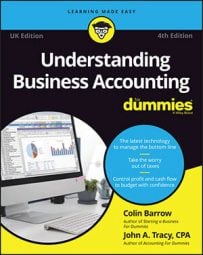The financial report of a business includes more than just the financial statements; a financial report also needs information called disclosures. Supplementary items such as financial schedules and tables provide one form of disclosure in financial reports.
A wide variety of other information is also presented, some of which is required if the business is a public corporation subject to federal regulations regarding financial reporting to its stockholders. Other information is voluntary and not strictly required legally or according to GAAP.
Not every public corporation includes every one of the disclosure items listed below, although the disclosures are fairly common. The level of disclosure by private businesses — after you get beyond the financial statements and footnotes — is generally much less than in public corporations.
In addition to the financial statements and footnotes to the financials, public corporations typically include some or all the following disclosures in their annual financial reports to their stockholders:
Cover (or transmittal) letter: A letter from the chief executive of the business to the stockholders, which usually takes credit for good news and blames bad news on big government, unfavorable world political developments, a poor economy, or some other thing beyond management’s control.
*Management’s report on internal control over financial reporting: An assertion by the chief executive officer and chief financial officer regarding their satisfaction with the effectiveness of the internal controls of the business, which are designed to ensure the reliability of its financial reports (and to prevent financial and accounting fraud).
Highlights table: A table that presents key figures from the financial statements, such as sales revenue, total assets, profit, total debt, owners’ equity, number of employees, and number of units sold (such as the number of vehicles sold by an automobile manufacturer). The idea is to give the stockholder a financial thumbnail sketch of the business.
Management discussion and analysis (MD&A): Deals with the major developments and changes during the year that affected the financial performance and situation of the business. The SEC requires this disclosure to be included in the annual financial reports of publicly owned corporations.
Segment information: A report of the sales revenue and operating profits (before interest and income tax, and perhaps before certain costs that cannot be allocated among different segments) for the major divisions of the organization, or for its different markets (international versus domestic, for example).
Historical summaries: A financial history that extends back beyond the years (usually three) included in the primary financial statements.
Graphics: Bar charts, trend charts, and pie charts representing financial conditions; photos of key people and products.
Promotional material: Information about the company, its products, its employees, and its managers, often stressing an overarching theme for the year. Most companies use their annual financial report as an advertising opportunity.
Profiles: Information about members of top management and the board of directors. Of course, everyone appears to be well qualified for his or her position. Negative information (such as prior brushes with the law) is not reported.
Quarterly summaries of profit performance and stock share prices: Shows financial performance for all four quarters in the year and stock price ranges for each quarter (required by the SEC).
Management’s responsibility statement: A short statement indicating that management has primary responsibility for the accounting methods used to prepare the financial statements, for writing the footnotes to the statements, and for providing the other disclosures in the financial report. Usually, this statement appears near the independent CPA auditor’s report.
*Independent auditor’s report: The report from the CPA firm that performed the audit, expressing an opinion on the fairness of the financial statements and accompanying disclosures. Public corporations are required to have audits; private businesses may or may not have their annual financial reports audited.
Company contact information: Information on how to contact the company, the Web site address of the company, how to get copies of the reports filed with the SEC, the stock transfer agent and registrar of the company, and other information.
Managers of public corporations rely on lawyers, CPA auditors, and their financial and accounting officers to make sure that everything that should be disclosed in the business’s annual financial reports is included, and that the exact wording of the disclosures is not misleading, inaccurate, or incomplete. This is a tall order. The field of financial reporting disclosure changes constantly.
Federal and state laws, as well as authoritative accounting standards, must be observed in financial report disclosures. Inadequate disclosure is just as serious as using wrong accounting methods for measuring profit and for determining values for assets, liabilities, and owners’ equity. A financial report can be misleading because of improper accounting methods or inadequate or misleading disclosure. Both types of deficiencies can lead to lawsuits against the business and its managers.

